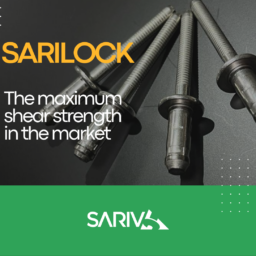
Last November the Würth Group’s Source Quality Engineer Conference took place, an event that annually involves the Quality Managers and SQEs of the various Würth locations around the world in sharing considerations on their general trend and on new projects.
Our collaboration with the Würth Group has lasted for many years, and it was a pleasure for us to see SARIV presented at the Würth World Summit as an example of digital transformation for the management of the production process from an Industry 4.0 perspective.
The focus of the part of the conference dedicated to us was our MES (Manufacturing Execution System), a digital architecture through which the production of our blind rivets and rivet nust is managed and monitored, from the raw material to the finished product.
Indeed, since 2012 we have started a digitization process that is still continuously evolving, with the aim of being able to have complete control over all production processes, and full traceability of every single step.
It is a broad spectrum architecture, through which MES, ERP and PLC interact for the management of the production process, the quality control of products and equipment, and data collection.
From the batch number of each item (found on the package label) we can trace all the details relating to the quality of the product: materials used, processes carried out, tests and measurements, statistical process information like Cp and Cpk and OEE.
Here are some examples of the production steps and accessible information for each individual blind rivet or rivet nut produced:
- Through PDM, the BOMs are defined:
- Raw material to be used: this is tracked from the moment of receipt by assigning specific barcodes
- Equipment to be used: the equipment is marked with a QR code, to instantly trace the supplier and all the production processes in which it has been involved. Furthermore, a maximum life time is defined for each component, which is automatically signaled by the system during use
- Machines that will be involved in the various production steps, with subsequent possibility of accessing any information, up to the operators who have performed each step
- Each production order includes a Control Plan, with periodic quality checks that are automatically requested from the operator by the system (such as mechanical shear and traction tests, and dimensional tests). The results of all tests performed are recorded and accessible at any time.
- A PLC on each machine automatically stops it when the system requests a scheduled quality control, or if the equipment in use has reached its life term, and also if any anomaly in the production phase is detected.
- Each semi-finished and finished product has a label with a barcode linked to the production batch, that allows to trace all information collected.
- The finished, packed and labeled product is stored in our automated warehouse, which can store up to 5,000 pallets. For each code, we can instantly trace the stocks available for sale or those already committed by order (divided by type of packaging or by semi-finished products).
A dynamic structure, therefore, in which the quality system is integrated into the IT platform of the production progress control, where all process data are stored in a database and connected directly to the batch.
In this vision, traceability becomes the key word: on the one hand it allows us to provide our customers with a range of extremely detailed information; on the other hand it is a fundamental tool for us as a manufacturing company, with a view to ever-increasing improvement in terms of quality and process.
Greater control means quality assurance.








